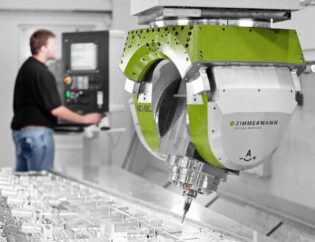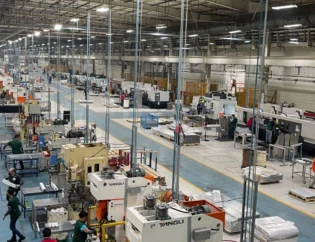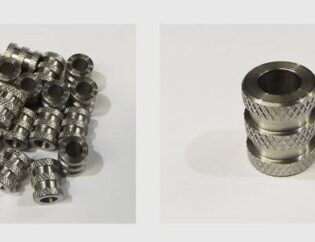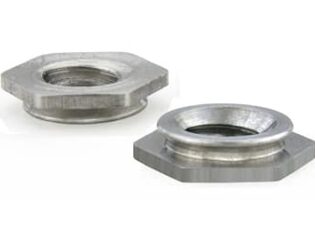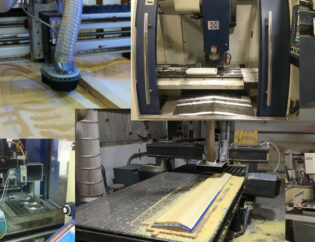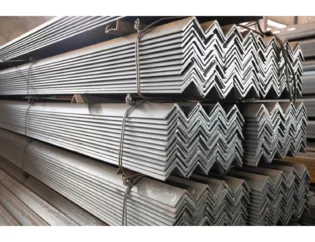In the rapidly evolving landscape of manufacturing, CNC robots have emerged as pivotal tools that enhance precision, efficiency, and productivity. This guide delves into the intricacies of CNC robotics, exploring their applications across various industries. Understanding these machines is essential for anyone looking to stay competitive in today’s tech-driven market.
Readers can expect to learn about the fundamental principles of CNC technology, the different types of CNC robots, and their operational mechanisms. We will also cover the benefits of integrating CNC robots into production processes, including cost savings and improved quality control.
Additionally, this guide will provide insights into the latest advancements in CNC robotics, including automation trends and software innovations. By the end, readers will have a comprehensive understanding of how CNC robots can transform manufacturing practices and drive business success.
The Ultimate Guide to CNC Robotics
Your manufacturing business has a long list of projects lined up, limited time, and a team of operators working overtime. How can you meet market demands without sacrificing the quality of your work or the safety of your team? The answer might be more simple than you think.
CNC robotics has the potential to transform any job shop into a well-oiled machine by simply improving standard manufacturing processes, like machine tending. These repetitive tasks, while vital, are taxing on operators who could better allocate their time to tasks that require their skills. Automating complex and repetitive tasks with CNC robots reduces human error, minimizes waste, and ensures consistent quality. But, that’s only the beginning when it comes to streamlining operations and improving overall efficiency.
Comprehensive Insights into CNC Robotics
CNC robotics integrates computer numerical control (CNC) technology with robotic systems to enhance manufacturing processes. This combination allows for increased automation, precision, and efficiency in various applications, including machining, assembly, and material handling. Companies like RapidDirect and FANUC America are at the forefront of this technology, providing solutions that cater to diverse manufacturing needs.
Technical Features of CNC Robotics
CNC robotics offers several technical features that enhance manufacturing capabilities. Below is a comparison table highlighting these features:
| Feature | Description |
|---|---|
| Automation | Reduces manual labor by automating repetitive tasks, increasing efficiency. |
| Precision | Achieves high accuracy in machining, often within +/- 0.0002 inches. |
| Flexibility | Easily reprogrammed for different tasks, accommodating various production needs. |
| Speed | Operates continuously, increasing production rates and reducing lead times. |
| Safety | Minimizes human exposure to hazardous tasks, improving workplace safety. |
| Integration | Compatible with various CNC machines and software for seamless operation. |
Types of CNC Robots
CNC robots come in various types, each designed for specific applications. The following table outlines the different types of CNC robots and their characteristics:
| Type | Description |
|---|---|
| Articulated Robots | Multi-jointed robots ideal for complex tasks like welding and assembly. |
| SCARA Robots | Designed for high-speed, precision tasks, often used in assembly lines. |
| Delta Robots | Parallel robots known for speed and precision, suitable for pick-and-place tasks. |
| Gantry Robots | Linear robots that operate on three axes, ideal for heavy lifting and material handling. |
| Collaborative Robots | Safe to work alongside humans, designed for tasks requiring human-robot collaboration. |
Advantages of CNC Robotics
CNC robotics offers numerous advantages that can significantly enhance manufacturing operations. These include:
- Increased Productivity: CNC robots can operate continuously, leading to higher output and reduced cycle times.
- Enhanced Precision: The integration of advanced sensors ensures high accuracy and consistency in production.
- Cost Savings: While the initial investment may be high, the long-term savings from reduced labor costs and increased efficiency are substantial.
- Flexibility: CNC robots can be easily reprogrammed for different tasks, making them suitable for both high-volume and custom production.
- Improved Safety: Automating hazardous tasks reduces the risk of workplace injuries, creating a safer environment for employees.
Applications of CNC Robotics
CNC robotics is widely used across various industries, including:
– Automotive: For precision cutting, welding, and assembly of vehicle components.
– Aerospace: Manufacturing complex parts with high safety standards, such as turbine blades and fuselage sections.
– Electronics: Handling delicate assembly tasks and producing circuit boards with precision.
– Medical: Manufacturing surgical instruments and implants with strict regulatory compliance.
Companies like FANUC America and Automation Within Reach provide tailored solutions for these applications, ensuring optimal performance and efficiency.
Conclusion
CNC robotics represents a significant advancement in manufacturing technology, offering numerous benefits that can transform production processes. By automating repetitive tasks, enhancing precision, and improving safety, CNC robotics enables manufacturers to meet market demands effectively. As the industry continues to evolve, companies like RapidDirect and FANUC America are leading the way in providing innovative solutions that cater to diverse manufacturing needs.
FAQs
1. What is CNC robotics?
CNC robotics combines computer numerical control technology with robotic systems to automate manufacturing processes, enhancing efficiency and precision.
2. What are the main advantages of using CNC robots?
CNC robots increase productivity, enhance precision, reduce costs, provide flexibility, and improve workplace safety.
3. In which industries are CNC robots commonly used?
CNC robots are widely used in automotive, aerospace, electronics, and medical industries for various applications.
4. How do CNC robots improve safety in manufacturing?
By automating hazardous tasks, CNC robots minimize human exposure to dangerous environments, reducing the risk of workplace injuries.
5. Can CNC robots be reprogrammed for different tasks?
Yes, CNC robots are designed to be easily reprogrammed, allowing them to adapt to various production needs and tasks.



